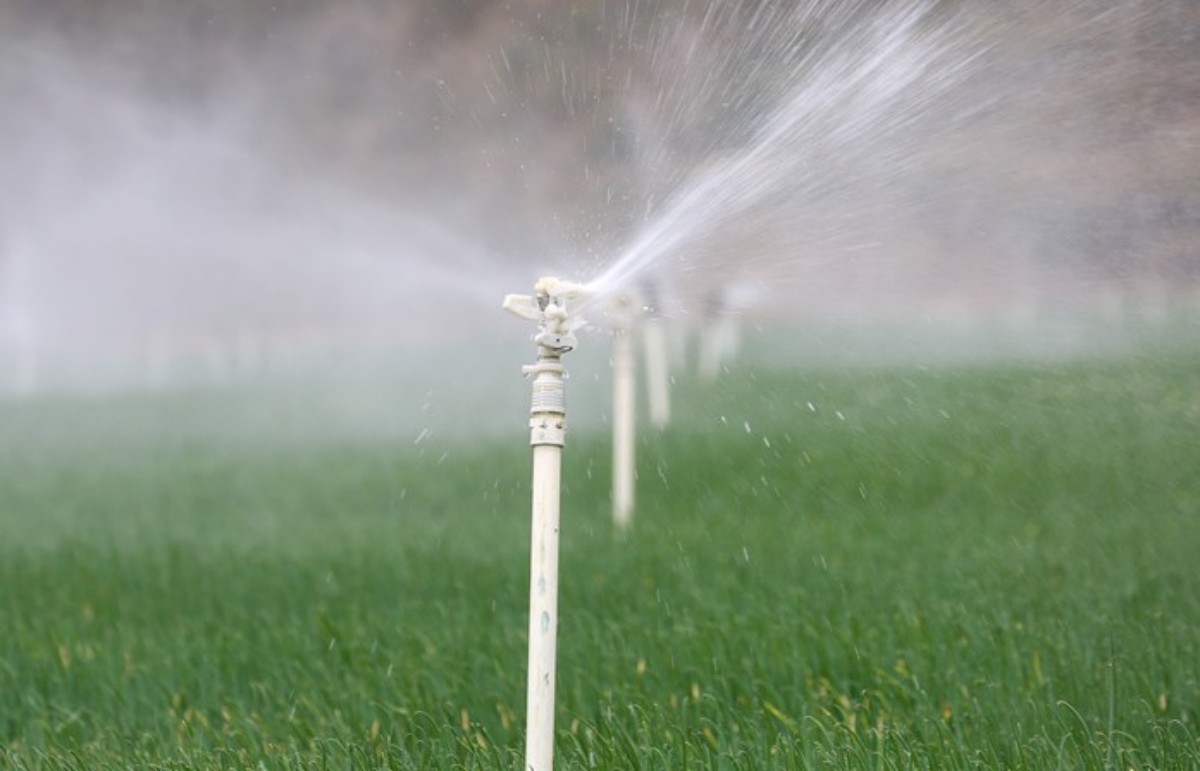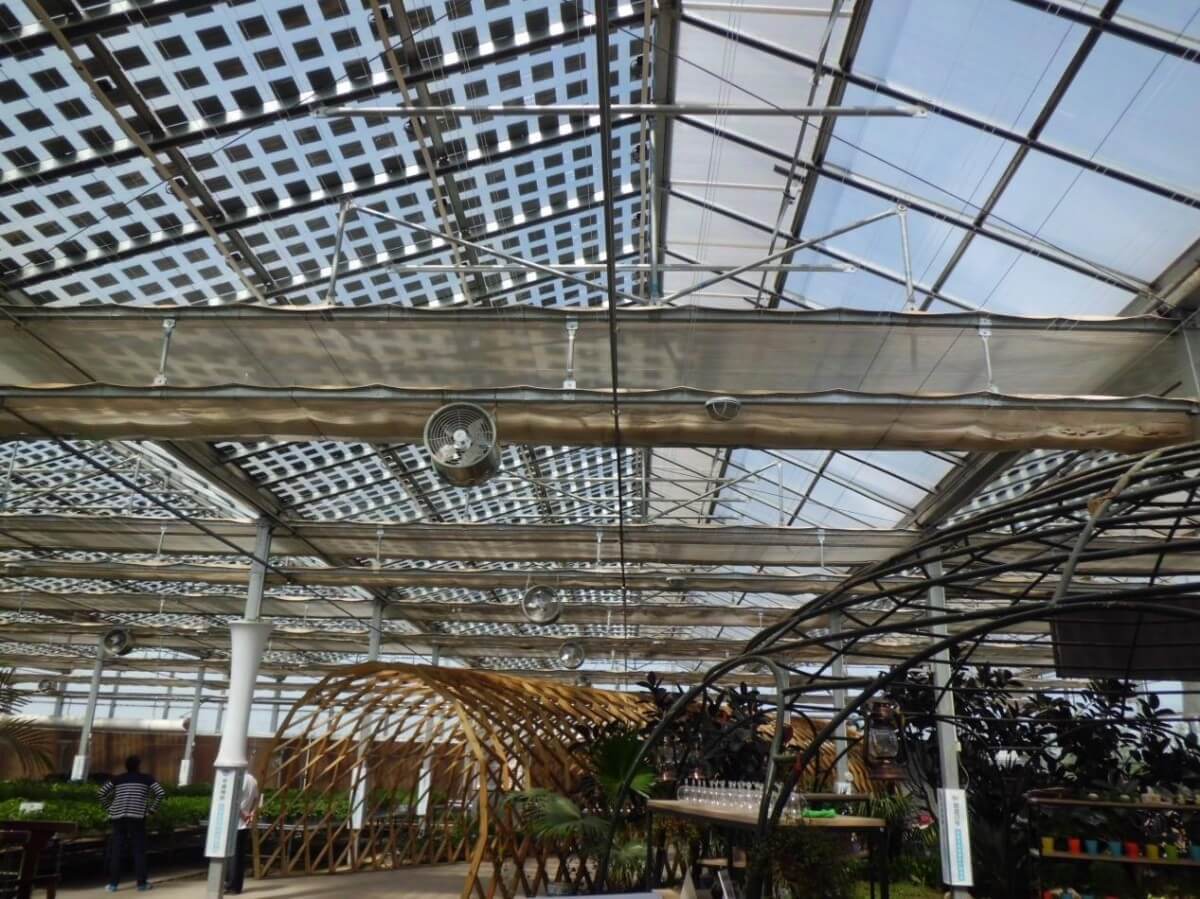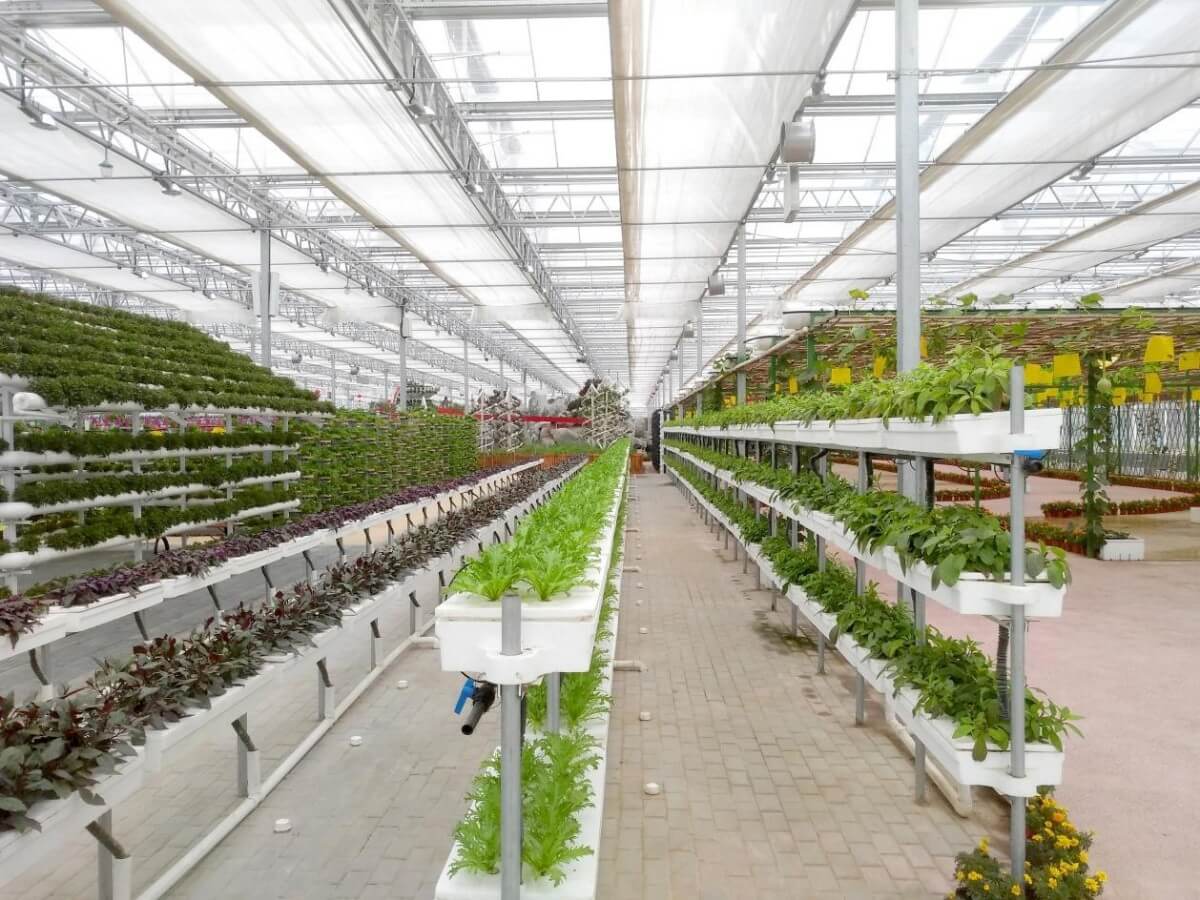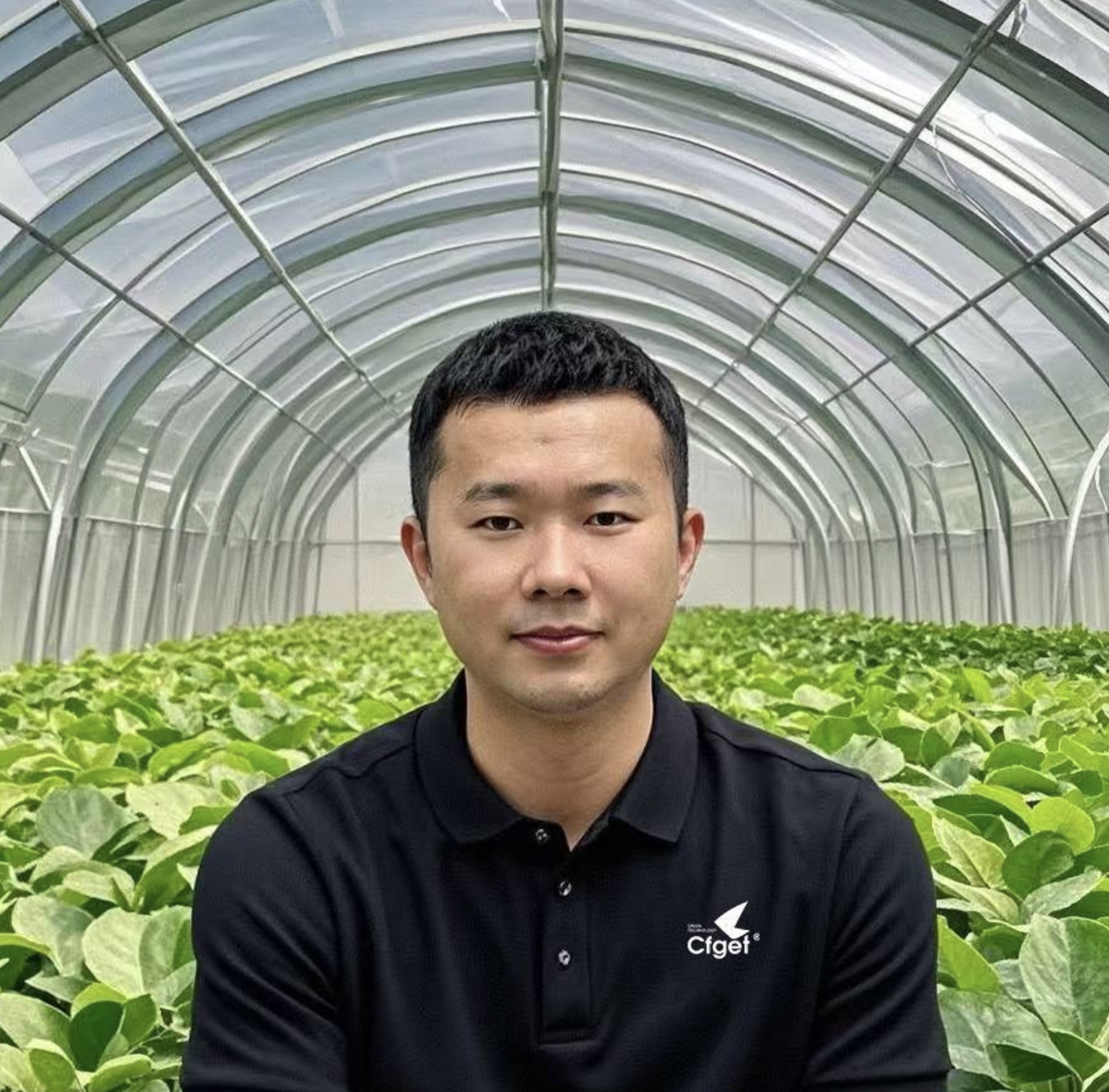जैसे-जैसे सतत विकास पर वैश्विक ध्यान बढ़ रहा है, ग्रीनहाउस कृषि धीरे-धीरे पर्यावरणीय समस्याओं के समाधान और कृषि उत्पादकता को बढ़ावा देने का एक अनिवार्य तरीका बन गई है। एक कुशल और बुद्धिमान कृषि पद्धति के रूप में, ग्रीनहाउस कृषि संसाधनों की बर्बादी को प्रभावी ढंग से कम कर सकती है और संसाधनों के उपयोग में सुधार ला सकती है, जिससे पर्यावरण के अनुकूल उत्पादन में योगदान मिलता है। यह लेख इस बात पर प्रकाश डालेगा कि कैसे ग्रीनहाउस कृषि, जल संरक्षण, ऊर्जा दक्षता, अपशिष्ट न्यूनीकरण और अन्य तरीकों के माध्यम से, कृषि के हरित परिवर्तन को गति प्रदान करती है।
1. अपव्यय से बचने के लिए सटीक जल प्रबंधन
जल संसाधनों का तर्कसंगत उपयोग ग्रीनहाउस कृषि का एक महत्वपूर्ण लाभ है। पारंपरिक खेती में, पानी की बर्बादी एक गंभीर समस्या है, खासकर शुष्क और अर्ध-शुष्क क्षेत्रों में, जहाँ पानी की कमी कृषि विकास में एक बाधा बन गई है। इसके विपरीत, ग्रीनहाउस कृषि में पानी की बर्बादी को काफी कम करने के लिए सटीक सिंचाई प्रणालियों का उपयोग किया जाता है। उदाहरण के लिए, ड्रिप और माइक्रो-स्प्रिंकलर सिंचाई प्रणालियाँ पानी को सीधे पौधों की जड़ों तक पहुँचाती हैं, जिससे वाष्पीकरण और रिसाव से बचा जा सकता है और जल उपयोग दक्षता में सुधार होता है।
व्यावहारिक अनुप्रयोग: At चेंगफेई ग्रीनहाउसएक स्वचालित सिंचाई प्रणाली का उपयोग वास्तविक समय में मिट्टी की नमी की निगरानी के लिए किया जाता है, जो पौधों की ज़रूरतों के अनुसार पानी की आपूर्ति को समायोजित करती है। यह तरीका न केवल पानी की बर्बादी को कम करता है, बल्कि यह भी सुनिश्चित करता है कि फसलें सबसे उपयुक्त नमी की स्थिति में उगें।
2. कार्बन उत्सर्जन कम करने के लिए ऊर्जा-कुशल प्रौद्योगिकियाँ
पौधों की उचित वृद्धि सुनिश्चित करने के लिए ग्रीनहाउस को अक्सर एक निश्चित तापमान, आर्द्रता और प्रकाश की स्थिति की आवश्यकता होती है। पारंपरिक ग्रीनहाउस इन स्थितियों को बनाए रखने के लिए बिजली और ईंधन जैसी ऊर्जा पर बहुत अधिक निर्भर करते हैं, जिसके परिणामस्वरूप ऊर्जा की खपत और कार्बन उत्सर्जन अधिक होता है। हालाँकि, आधुनिक ग्रीनहाउस पारंपरिक ऊर्जा स्रोतों पर निर्भरता को काफी कम करने के लिए बुद्धिमान नियंत्रण प्रणालियों, नवीकरणीय ऊर्जा स्रोतों (जैसे सौर और पवन ऊर्जा), और कुशल इन्सुलेशन सामग्री का उपयोग करते हैं।
व्यावहारिक अनुप्रयोग:चेंगफ़ेई ग्रीनहाउस अपनी ऊर्जा ज़रूरतों के एक हिस्से की पूर्ति के लिए उच्च-दक्षता वाले सौर पैनलों और पवन ऊर्जा उपकरणों का उपयोग करता है। इससे पारंपरिक पावर ग्रिड पर निर्भरता कम होती है, कार्बन उत्सर्जन कम होता है और हरित ऊर्जा के उपयोग को बढ़ावा मिलता है। इसके अतिरिक्त, ग्रीनहाउस में दोहरी-परत वाली झिल्ली संरचना का उपयोग किया गया है जो इन्सुलेशन को बेहतर बनाती है और हीटिंग व कूलिंग के लिए ऊर्जा की खपत को कम करती है।
3. हरित वृक्षारोपण को बढ़ावा देने के लिए उर्वरकों और कीटनाशकों के उपयोग को कम करना
रासायनिक उर्वरकों और कीटनाशकों का अत्यधिक उपयोग पारंपरिक कृषि में प्रदूषण का एक प्रमुख स्रोत है। ग्रीनहाउस कृषि, सटीक उर्वरक और कीट प्रबंधन के माध्यम से उर्वरकों और कीटनाशकों पर निर्भरता को काफी कम कर सकती है। ग्रीनहाउस के भीतर नियंत्रित वातावरण बाहरी कीटों और बीमारियों को प्रवेश करने से रोकता है, जिससे किसान कीटों के प्रबंधन के लिए जैविक नियंत्रण विधियों और बुद्धिमान निगरानी प्रणालियों का उपयोग कर सकते हैं, जिससे कीटनाशकों का उपयोग कम हो जाता है।
व्यावहारिक अनुप्रयोग: At चेंगफेई ग्रीनहाउसजैविक कीट नियंत्रण विधियों का उपयोग किया जाता है, जिसमें कीटों के प्रबंधन के लिए लाभकारी कीटों का उपयोग किया जाता है, जबकि इंटरनेट ऑफ थिंग्स (IoT) तकनीक पौधों के स्वास्थ्य की निगरानी करती है और जैविक उर्वरकों और सूक्ष्म तत्वों का सटीक उपयोग सुनिश्चित करती है। यह दृष्टिकोण न केवल रासायनिक उर्वरकों के उपयोग को कम करता है, बल्कि पौधों की रोगों के प्रति प्राकृतिक प्रतिरोधक क्षमता को भी बढ़ाता है, जिससे पर्यावरण-अनुकूल, रसायन-मुक्त खेती को बढ़ावा मिलता है।
4. ऊर्ध्वाधर खेती से भूमि उपयोग दक्षता में वृद्धि
भूमि की सीमित उपलब्धता वैश्विक कृषि के सामने आने वाली प्रमुख चुनौतियों में से एक है, खासकर जब शहरीकरण तेज़ी से बढ़ रहा है और शहरों के पास कृषि भूमि लगातार दुर्लभ होती जा रही है। ग्रीनहाउस कृषि, ऊर्ध्वाधर खेती और बहु-परत खेती के माध्यम से भूमि उपयोग दक्षता को अधिकतम कर सकती है। परतों में फसलें उगाकर, ग्रीनहाउस सीमित स्थान में विभिन्न प्रकार के पौधे उगा सकते हैं, जिससे भूमि उपयोग में उल्लेखनीय सुधार होता है।
व्यावहारिक अनुप्रयोग: चेंगफेई ग्रीनहाउसयह एक ऊर्ध्वाधर कृषि प्रणाली का उपयोग करता है, जहाँ एलईडी ग्रो लाइटें विभिन्न स्तरों पर फसलों के लिए प्राकृतिक सूर्य के प्रकाश का पूरक होती हैं। इस पद्धति से ग्रीनहाउस एक ही स्थान पर विभिन्न प्रकार की फसलें उगा सकता है, जिससे प्रति वर्ग मीटर उपज बढ़ती है और भूमि का अधिक कुशल उपयोग सुनिश्चित होता है।
5. अपशिष्ट को कम करने के लिए संसाधन पुनर्चक्रण
ग्रीनहाउस कृषि का एक अन्य पर्यावरणीय लाभ संसाधनों का पुनर्चक्रण है। पारंपरिक कृषि में, बड़ी मात्रा में फसल अपशिष्ट अक्सर फेंक दिए जाते हैं या जला दिए जाते हैं, जिससे बहुमूल्य संसाधन बर्बाद होते हैं और पर्यावरण प्रदूषण होता है। ग्रीनहाउस में, पौधों के अवशेषों, मिट्टी के अपशिष्ट और अन्य उप-उत्पादों को पुनर्चक्रित करके खाद या जैविक उर्वरकों में बदला जा सकता है, जिन्हें फिर कृषि उत्पादन में पुनः शामिल किया जा सकता है।
व्यावहारिक अनुप्रयोग: At चेंगफेई ग्रीनहाउसपौधों की जड़ों और पत्तियों जैसे जैविक कचरे को कम्पोस्ट बनाने वाली सुविधा में भेजा जाता है, जहाँ इसे जैविक खाद में बदल दिया जाता है। इस खाद का उपयोग मिट्टी की गुणवत्ता और उर्वरता बढ़ाने के लिए किया जाता है, जिससे रासायनिक खादों की आवश्यकता कम हो जाती है। इसके अतिरिक्त, ग्रीनहाउस अपशिष्ट जल को छानने और शुद्ध करने के लिए उन्नत जल पुनर्चक्रण प्रणालियों का उपयोग करता है, जिसका पुन: उपयोग किया जाता है, जिससे पानी की खपत कम होती है।
निष्कर्ष
ग्रीनहाउस कृषि न केवल फसल की पैदावार बढ़ाने का एक प्रभावी तरीका है, बल्कि टिकाऊ कृषि को बढ़ावा देने वाली एक प्रमुख तकनीक भी है। सटीक संसाधन प्रबंधन, ऊर्जा संरक्षण, उर्वरकों और कीटनाशकों के उपयोग में कमी, भूमि उपयोग में सुधार और अपशिष्ट पुनर्चक्रण को बढ़ावा देकर, ग्रीनहाउस कृषि एक पर्यावरण-अनुकूल उत्पादन मॉडल की ओर बढ़ रही है। जैसे-जैसे तकनीक आगे बढ़ती रहेगी, ग्रीनहाउस कृषि का भविष्य और भी अधिक बुद्धिमान और पर्यावरण-अनुकूल होगा, जो वैश्विक कृषि के हरित परिवर्तन के लिए टिकाऊ समाधान प्रदान करेगा।
हमारे साथ आगे चर्चा करने के लिए आपका स्वागत है।
ईमेल:info@cfgreenhouse.com
#ग्रीनहाउस कृषि
#टिकाऊ खेती
#पर्यावरणीय स्थिरता
#कृषि में संसाधन दक्षता
#कृषि अपशिष्ट को कम करना
#पर्यावरण-अनुकूल कृषि पद्धतियाँ
पोस्ट करने का समय: 26 जनवरी 2025










 चैट करने के लिए क्लिक करें
चैट करने के लिए क्लिक करें